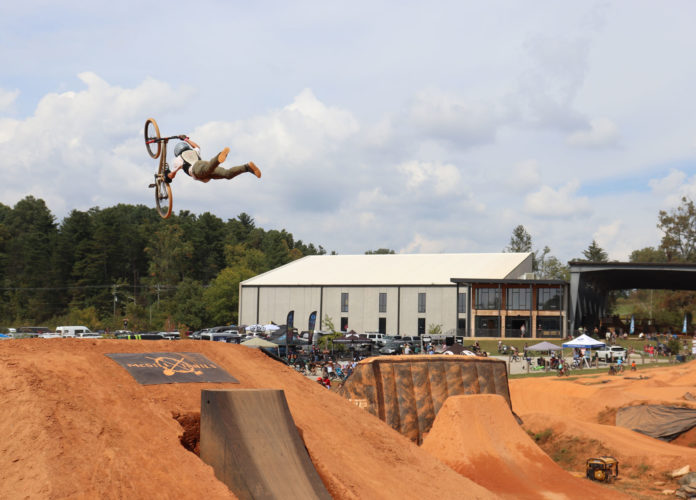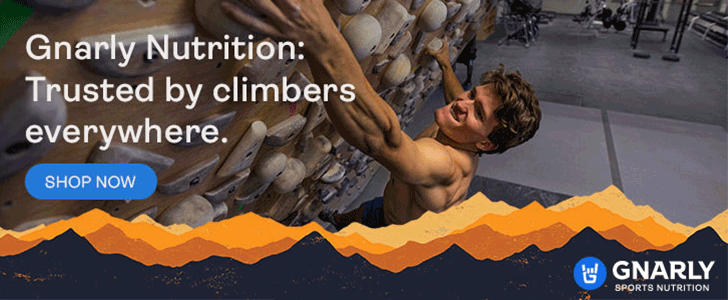Behind the Desk is a recurring series that interviews people who are part of the climbing industry. For this installment, we talk with Elizabeth Jackson, founder of Riveter in North Carolina. One of the most unique climbing facilities in the world, Riveter features a 16,000-square-foot climbing gym (with areas for roped and auto-belay climbing, bouldering, and a kids climbing zone), and a comprehensive outdoor dirt jump bike park with trails for all skill levels. The elaborate Riveter grounds also include a “sweat studio” for yoga and other classes, a weightlifting and fitness studio, and a “libation station” that serves beer, wine, coffee, and other non-alcoholic drinks and snacks. Jackson’s love of climbing traces back to a NOLS course and time as a student at Brevard College. But we were curious to hear more about what it’s like to combine climbing and biking into a truly one-of-a-kind “gathering place for all humans.”
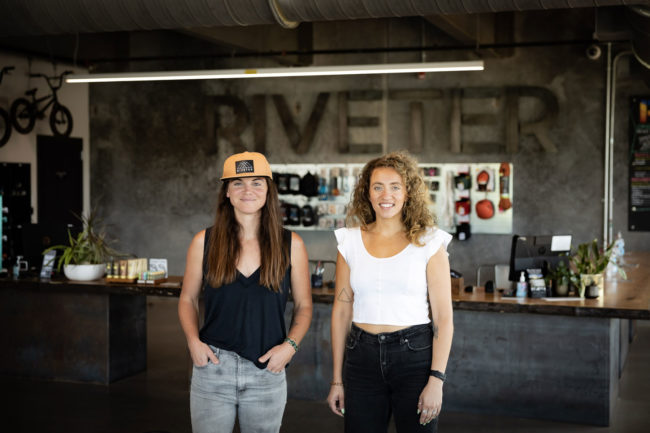
Name: Elizabeth Jackson
Title: General Manager/Founder, Riveter
Location: Fletcher, North Carolina
CBJ: It’s not fair to call Riveter just a climbing gym because your facility is so much more than that. How did the combining of mountain biking and climbing come about?
JACKSON: I had been climbing for about 8-10 years by the time I started having a family and going to graduate school at Duke University for environmental management. I did a lot of work with business and sustainability, but I ended up working in the recycling and bio-plastics industries after graduate school. I just really missed the outdoor industry and community—around the same time, I started mountain biking and I saw this opportunity to replicate what the climbing gym culture does to foster the climbing community, but in the bike world.
I started looking at a business plan that I had done for a climbing gym a few years earlier, and I mirrored the bike park model after the climbing gym model. And then I started thinking: What else do people like to do after they ride or climb or do yoga? They like to drink beer—or hang out with friends and drink something. So, that’s how the bar component [“libation station”] became a way to bring all outdoors people together…not just riders, not just climbers. The model evolved from just being a climbing gym to being a multi-faceted business. And it was actually the gyms out West—and Movement RiNo [in Denver], in particular—that I loved, and their concept of having a coffee shop/bar and a food truck courtyard. That’s what I wanted to create in North Carolina—somewhere where people could keep hanging out after they finished climbing or riding.
Was there ever a thought of opening a climbing gym and a bike park as separate facilities—and not trying to combine them? I mean, the combination of two recreations with very specific and different customer bases was risky, right?
Yeah, the bike park was definitely a wild card. Pisgah National Forest [outside of Asheville, North Carolina] and DuPont State Recreational Forest [outside of Brevard, North Carolina]—where most riders go around here—are free. So, asking people to pay [at Riveter] naturally prompted people to wonder what would make Riveter’s riding experience different. Well, we have a trail crew that maintains the bike trails, and a different style of dirt jumping than the forest trails. And we have a fitness studio, showers, lockers, yoga, events, and all the other things that a climbing gym typically has.
I definitely thought about just doing a climbing gym; originally that was my plan. I wanted to be close to the forests and have a hostel/bar component that would bring the riders and the climbers together. But once I found the Riveter property—it’s beautiful and it has this perfect hill—I could see the dirt jumps drop off that hill and cross this little creek. So, we built different bridges and different level gaps crossing over the creek. Like I said, it’s a different experience than riding trails in the nearby forests. I don’t know—I just had a feeling that the community here was growing and there wasn’t really a venue for ride events. I guess I just believed in this community to show up.
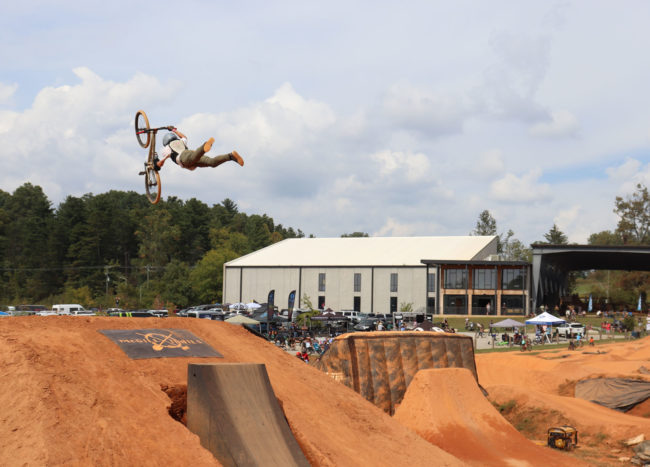
Let’s talk more about your customer base. Do most people come to Riveter to ride and climb, or do the communities remain fairly separate—with people typically only partaking in one activity or the other?
It is mostly two separate clientele. We offer a membership for riding, a membership for climbing, and a membership for both. But I will say it’s been really cool to watch some of these people that I’ve known as just riders or just climbers try the other thing. Members get two free day passes per month, but they can use them on either side—for climbing or for riding. So, members will make friends with people who ride or climb, and they’ll meet-up to learn from each other.
Since you’ve been part of both communities—riders and climbers—for a while, and since you draw on both communities for memberships, how do you see the two communities as similar and different?
That’s a great question, and I’ve thought about this a lot, especially in thinking how we can better cater to everyone. The riding community will blow up social media. They share their videos, they tag each other, and they tag themselves when they’re here. Every bike post we put out on social media will get a lot of traffic. The climbing community tends to be a little less—I don’t want to say engaged, because it’s obviously a very engaged community—but on social platforms, it’s not as ‘loud.’
As far as a sense of community goes, the climbers and the riders both show up. It’s been really beautiful. We’ll have events that are climbers’ events, yet the riders still show up and hang out. For example, our anniversary party was a climbing competition, but tons of riders came out and we had a DJ and everyone just stayed and partied together. In general, both are very genuine and supportive communities.
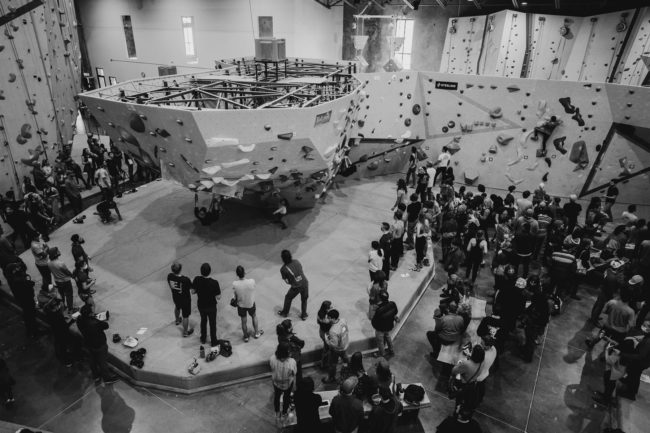
There’s also a common love for the outdoors, for mountains, and for being active. Yet, no place before Riveter that I’m aware of has ever combined the communities so overtly. Do you think you’ve tapped into a new way for each industry to grow—more climbers becoming riders and more riders becoming climbers?
I do think that was a big drive for me—and it is a portion of our target market. Mountain biking is the trend out here. Everyone wants to get a mountain bike, and everyone travels here to ride. It’s just the thing—they ride and then they go to breweries. So, coming from a place where I got exposed to climbing on my NOLS course, I know I probably never would have been exposed to climbing otherwise. And, it changed my whole life and my trajectory. So, I’ve always wondered: ‘How can I get climbing in front of more people?’ I have three daughters and I definitely think tapping into a young market that doesn’t have access to it or doesn’t have exposure to it—all of that is definitely a key for us.
I really just wanted to make a place where a group of friends or a family would find something that everyone could do—climbing, riding, yoga or just hanging out.
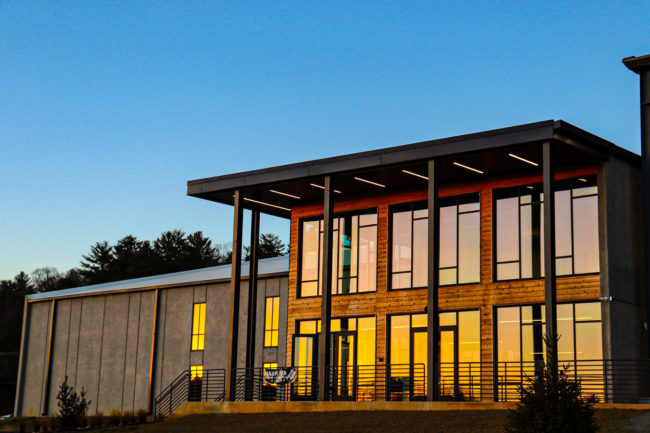
More than anything, I think your facility proves that all the amenities for a climbing gym have not already been thought of. There’s still room for creativity, and there are still new or unique activities—like mountain biking—that can be coupled with the climbing gym experience.
Right, a little bit bigger scope than just coffee and lifting weights. Remember when I said it was originally an idea for a climbing hostel? I love—as many of us do—the lifestyle of climbing, and I sometimes miss the dirtbag/hangout-at-cars-afterwards aspect. So, how do you replicate that part in a facility, as opposed to just the let’s-go-get-fit model? Yes, we all want to get fit and train hard…but what about the other parts of climbing―the connection, the afterparty, etc? That’s the part I was trying to replicate.
I also feel strongly that the outdoor industry has a long way to go—creating more access, creating space and increasing representation; the Riveter is founded on this mission to truly create a place for all humans. The pandemic has set us back tremendously as a startup business, but the truly positive culture that is the Riveter gives me confidence in the future.

John Burgman is the author of High Drama, a book that chronicles the history of American competition climbing. He is a Fulbright journalism grant recipient and a former magazine editor. He holds a master’s degree from New York University and bachelor’s degree from Miami University. In addition to writing, he coaches a youth bouldering team. Follow him on Twitter @John_Burgman and Instagram @jbclimbs. Read our interview Meet John Burgman, U.S. Comp Climbing’s Top Journalist.




